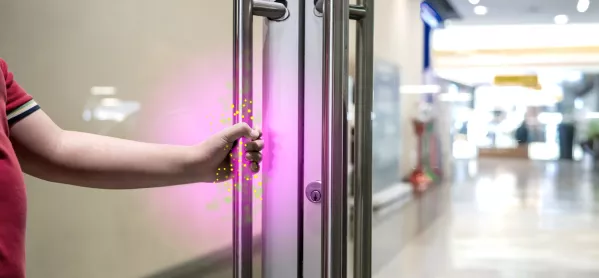- Home
- Are school open mornings putting teachers at risk?
Are school open mornings putting teachers at risk?

Open mornings and evenings have always been the marketing high point of the school year: the chance to show off our work and facilities.
For obvious reasons, though, some schools have now abandoned actual tours completely. A recent Tes article celebrated the dawn of online tours, as many schools and colleges minimise the risk of coronavirus spreading by keeping their prospective pupils’ families on the other side of a computer screen.
But some institutions have still gone ahead with open days as always. In uncertain times, and where competition is fierce for pupils, many schools cannot just allow things to take their course.
Is it a sign of strength (confidence in health and safety precautions) or weakness (not being able to miss a recruitment opportunity) that such events are allowed to continue?
Profligate with teachers’ health
Perhaps schools should take warning from last weekend’s crowded White House Rose Garden event, where no social distancing or masks were in evidence. Even being outdoors was not enough to stop virus transmission, resulting in the US president’s admission to hospital. Perhaps UK government education officials should be considering the daily risk to the health of teachers who work, often barefaced, in crowded classrooms without such airy ventilation.
Bubble arrangements are supposed to minimise disruption in schools, by taking out only a year group and those in close proximity to them, should a student test positive for Covid. Nonetheless, schools are increasingly finding themselves short-staffed, as teachers or their relatives come down with Covid symptoms, forcing them to self-isolate until test results (eventually) come through.
Therefore it might seem a bit profligate with the vital human resources of the school - the teachers - to run an open day, allowing members of the public into school. One stray infection in a school-staff bubble could compromise teaching provision across the whole school.
Is it wise to put all your teaching eggs in one marketing basket?
In among all this is the indirect risk to families, especially where teachers are single parents or sole carers for elderly relatives.
Bringing Covid risk on to the premises
Moreover, is the experience at the event likely to be good enough to warrant the risk? Parents and children are tactile. They want to touch displays and flick through books. In previous years, such contact was great, signalling interest and involvement. But, this year, younger siblings - who are understandably fidgety and want to play hide and seek - could set up a whole touch-trail, which needs to be sanitised at the earliest polite opportunity. (Even in these Covid times, it’s hard to clean up too obviously without causing offence.)
The most Covid-secure schools (I hate the terminology, because of its ambiguity) will have quarantined their marketing documentation well before the event, and used natural materials as far as possible. (It came as a surprise to me that plastic retains viruses longer than paper.)
There will be a strict rota of family groups (with a student guide, where applicable) sent on a set tour around the premises. Every effort will go into maintaining a safe distance, keeping the tour to a safe minimum length of time, and ensuring that there are no more than six people in a room at once. There will have been walk-throughs and safety checks of every single factor within the control of the school’s health and safety and marketing departments.
What may have passed unnoticed are the risks that staff, students and visitors bring with them on to the premises. There is no testing equipment for staff or visitors, and no temperature checks either, so no guarantee beyond the obvious that people can be safely admitted.
Worth the risk to teachers’ safety?
The underlying health of employees is something that individual teachers might have to raise with their employer, possibly with the support of their unions. It should not be forgotten that both parties share a responsibility enshrined in health and safety legislation for the individual’s safety and welfare. Not to raise concerns might be negligent, although they may not be well-received.
This year, the glossy surfaces on which we will need to concentrate will be less the marketing to bring visitors and students in and more the misting plastic of the safety visors and the desks and shelves that need constant sanitising to keep out coronavirus.
In which case, isn’t it time to think again about face-to-face events, and whether perceived competition for students is worth the increased risk to the wellbeing and safety of teachers?
Yvonne Williams is head of English and drama in a secondary school in the South of England. She has contributed chapters on workload and wellbeing to Mentoring English Teachers in the Secondary School, edited by Debbie Hickman (Routledge)
Keep reading for just £1 per month
You've reached your limit of free articles this month. Subscribe for £1 per month for three months and get:
- Unlimited access to all Tes magazine content
- Exclusive subscriber-only stories
- Award-winning email newsletters



